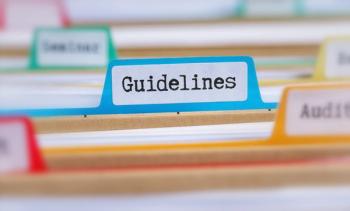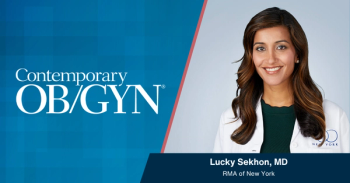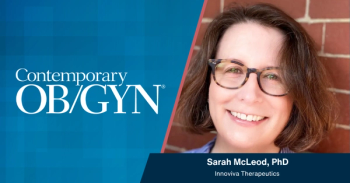
ISGE October 2003 Volume 10 Issue 2
In minimally invasive surgery (MIS), complications can occur due to faulty instruments, surgical technique, or inadequate patient election. Surgeons who routinely perform MIS rarely encounter complications. Conversely, practicing gynecologists at large often find that certain procedures or techniques are not as safe as previously reported in the literature by the "experts." One of the reasons is that complications tend to be underreported.
Editor: Togas Tulandi, MD
Editorial Board: Alan Alperstein, Michelle Nisolle, Robert O’Shea, Kazuo Satoh
Inside this Issue:
Togas Tulandi, MD
Underreporting complications
In minimally invasive surgery (MIS), complications can occur due to faulty instruments, surgical technique, or inadequate patient election. Surgeons who routinely perform MIS rarely encounter complications. Conversely, practicing gynecologists
As expected, equipment companies tend to be biased and would downplay complications related to their product. For example, a short time ago an instrument company approached me. Upon questioning, the risk of bowel perforation due the device was very briefly mentioned. It was not revealed that in the past year only there have been at least 4 bowel injuries related to this device in Eastern Canada. Undoubtedly, this is a high rate of device-related injury.
Recently, Milad and Sokol (2003) reported that they were unable to find any morcellator-related injuries in the literature, but found 17 cases in the FDA database. Over the years I have progressed from using a manual morcelator, to a battery-operated one and then an electric morcelator without a single complication. However, during my visit to Asia a few years ago, I was informed that a patient died following an unrecognized morcelator-related bowel injury. Contrary to the above device-related complications, morcelator-related injuries are operator-dependent.
Complications are not always reported and I would encourage all of us to publish our experiences with complications. We have a responsibility to inform our patients and the medical community about the safety and risks of a procedure or device. Patient safety should be our priority. Medical companies and physicians have an obligation to publish their results, both positive and negative.
For this issue of ISGE NEWS, Lilo Mettler has written an obituary of Kurt Semm. Kurt is no longer with us, but his legends and his inventions stay.
In this issue, you can also read a position paper about the World Federation of Societies of Gynecologic Endoscopy, as well as a committee report prepared by Jack Sciarra.
Togas Tulandi MD
Editor
Jacques Donnez, MD
Dear Members,
I would like to start this message by remembering Professor Kurt Semm who recently passed away. He was certainly one of the pioneers in endoscopic surgery. For many years, he tried to convince gynecologists to use endoscopic techniques to perform different types of gynecologic operations. Initially, his views were met with scepticisms. Today, 25 years later, all these techniques have become routine practices among gynecologists of the third millennium. In our Cancun meeting this year, he became an honorary member of the ISGE. I would like everyone to remember him and cherish his memory.
The Society is doing well. Among our sponsors, Storz has agreed to become our platinum sponsor. Increasing membership is one of the goals of the Society. However, in order to attract new members, we have to provide high quality scientific activities. It is for this reason that the Vice-President and Chairman of the Scientific Committee, Harry Reich is planning two excellent meetings with outstanding speakers from Kuala Lumpur (Malaysia) and South Africa. In our meeting in April 2004, endoscopic surgery will be demonstrated and discussed. Another meeting in South Africa in September 2004 will be devoted to endometriosis.
Simone Wamsteker recently informed me as the president of ISGE that last August Kees Wamsteker was ill and he is now recovering
slowly. On behalf of all ISGE members, I wish him a speedy recovery.
Sincerely yours,
J. Donnez
President ISGE
Kurt Karl Stephan Semm
1927 - 2003
This obituary is dedicated to my teacher in gynaecological laparoscopy and to a dear friend who died after a long illness on July 16th, 2003.
It is an honor for me, as his student and friend, to briefly review his personal and professional life. Of interest, his thesis in 1958 was not related to surgery. He wrote The problem of labor contractions under the influence of the "oxytocin-oxytocinase" metabolism under the supervision of the Nobel Prize winner, Professor Adolf Butenandt. Shortly after, he left the endocrine field and published many scientific papers related to the diagnosis and therapy of infertility.
In the early 1960s, Kurt Semm, as a talented university assistant, started to dedicate his life to laparoscopy. He preferred the term pelviscopy for operative laparoscopy. He used it to differentiate between gynecological laparoscopy and procedures that other specialties performed for upper abdominal screening and liver biopsy. He had hoped that the introduction of a new terminology would persuade the insurance companies to pay a higher fee for the different pelviscopic procedures. This differentiation stayed in the German Society of Gynecology and Obstetrics from 1965 until 1995. As gynecologists have now extended their surgical procedures out of the pelvis, including lymphadenectomies and other procedures, laparoscopy is a more appropriate term.
Based on his training both as a toolmaker and physician, his first inventions were to develop an electronic CO2 insufflator, a uterine manipulator and a tubal patency-testing device. He presented his works at the German, Austrian and Swiss gynecological meetings in the early 1960s. Palmer’s work in France stimulated Semm’s interests in gynecologic laparoscopy, leading to his invention of CO2 pneu-automatic insufflator. In 1956, he founded the German Society of Fertility and Sterility. In 1964 Semm received his professorial degree from the Department of Obstetrics and Gynecology, Munich University.
Semm’s early struggles and determinations to develop laparoscopic surgery in gynecology and general surgery could be illustrated in the following anecdotes.
- Semm was in the middle of a slide presentation on laparoscopic ovarian cyst enucleation when somebody unplugged the projector and stated that the surgery was unethical.
- In the seventies, his colleagues suggested that only a person with brain damage would perform laparoscopic surgery and they persuaded Semm to undergo a brain scan.
- In 1972, following Semm’s presentation on laparoscopic ovarian cyst enucleation, a German gynecological professor gave me the following advice: "My young colleague, if you wish to advance in the German academic world, don’t pay any attention to Semm’s nonsense".
- Between 1975-1980, his idea to perform cholecystectomy by laparoscopy was rejected by the general surgeons. In 1981, following his lecture on laparoscopic appendectomy, the President of the German Surgical Society wrote to the Board of Directors of the German Gynecological Society suggesting suspension of Semm from medical practice.
- The American Journal of Obstetrics and Gynecology rejected Semm’s paper on laparoscopic appendectomy. One of the reviewers questioned the ethical aspect of the procedure.
In 1984, Semm described laparoscopic assistance vaginal hysterectomy in his book "Gynkologische Laparoskopie" (Schattauer Publishing House, page 236). This "cookbook" for gynecological endoscopy, was translated into English and published by the American Yearbook Company in 1987. Translations into eight other languages followed. An extension of the book was recently published under the title "Endoskopische Abdominalchirurgie" (Editors: L. Mettler and K. Semm, Schattauer Publishing House, 2002.)
His activities in national and international professional organizations, many of which were founded by him, were numerous. He was the president of the International Federation of Fertility Societies, and an honorary member of many endoscopic societies. He was a brilliant teacher and head of one of the largest university clinics in Germany. Late in his life, he received many honors, including the "Pioneer in Endoscopy" Award from the Board of Governors of the SAGES (Society of American Gastrointestinal Endoscopic Surgeons) in New York in March 2002, and the honorary membership of ISGE in Cancun, Mexico.
Semm was married for thirty years to Roswitha von Morozowicz who died of breast cancer in 1986. In 1994, he married Isolde Semm, an Irish gynecologist. They later moved to Tucson, Arizona, with their two children. Isolde Semm is now the president of WISAP.
It has been an honor to witness the milestones, which Kurt Karl Stephan Semm achieved in the field of laparoscopic surgery. Students, and colleagues would never forget him. There have been only a few people in the world who have been able to achieve what Kurt Semm has achieved in 75 years. He was a man of great reputation whose methods were well understood and developed.
Professor Dr. med. Liselotte Mettler
Deputy Director of the Department of Obstetrics and Gynecology
University of Kiel
John J. Sciarra, M.D., Ph.D.
Past President, ISGE
Chair, Federation Steering Committee
Dear Friends,
For many years, going back to the presidency of Alan Gordon, there have been informal discussions with the AAGL regarding possible cooperative and non-competitive ventures between the ISGE and the AAGL. Unfortunately, little tangible progress resulted from these early discussions. However, at the ISGE World Congress in Australia in 2000, the then President of the AAGL, Jay Cooper, and I met to discuss ways that the two societies could work together. These discussions continued at the World Congress in Chicago in 2001. Ultimately, we agreed to have a meeting of key individuals in both societies to develop what we originally envisioned would be a cooperative agreement.
Accordingly, a meeting was held in Chicago in February 2002. Those attending representing the ISGE were Victor Gomel, Alan Gordon, John Newton, Ray Valle, Lip Kee Yap and myself. Those attending representing the AAGL were Andy Brill, Jay Cooper, David Olive, Frank Loffer and Linda Michels.
Report of the Federation Steering Committee
continued
The meeting was very productive. The general conclusion was that one way we could advance the field of gynecologic endoscopy on a world-wide basis would be for the ISGE to transform itself into a World Federation of Societies of Gynecologic Endoscopy (WFSGE), of which the AAGL would be a key member, along with other national endoscopic societies and/or national federations. This would allow for one major well-attended World Congress each year organized by the federation and would allow national societies such as the AAGL to continue having their annual meetings that would be non-competitive. The AAGL would continue with their well-established journal and this could become the journal for the federation. The AAGL agreed that a name change for the journal would be reasonable to consider and the federation could be represented on the editorial board. In addition, the AAGL would minimize holding AAGL meetings outside of the United States and their members would be invited to our regional meetings. The ISGE would continue its worldwide training program and members of the AAGL would be invited to participate.
It was planned that the idea of a federation would be presented to our board in Berlin and the idea would be presented to the AAGL Board at their annual meeting in November 2002 in Miami. Unfortunately, the ISGE was unable to have a meaningful discussion regarding the concept of forming a federation at the Berlin 2002 meeting because of other issues. However, the information was presented to the AAGL at their Board meeting in Miami in November 2002 and was favorably received and was endorsed again recently by the AAGL.
In Cancun, a presentation was made to the officers and the ISGE Board regarding the feasibility of the concept of the formation of a federation. The officers and the board endorsed the concept and the Steering Committee was charged with exploring the interests of major national societies of gynecologic endoscopy and to report back to the officers and board of the ISGE in one year. If sufficient interest is solicited, a transitional plan will have to be developed that will probably take three to five years to implement.
Gynecologic Endoscopy has now become an important part of practice in every country and many national societies that have evolved. A world federation is an obvious evolutionary development, and the ISGE has an opportunity to exert a leadership role in the creation of a world federation if we so desire. The goal of the new federation would be similar to the goal of the ISGE in that the new federation, like the present ISGE, will work to provide the best possible education and exchange of information among practitioners and specialists in all countries.
The Steering Committee is interested in having feedback from the members of the ISGE.
Very sincerely,
John J. Sciarra, M.D., Ph.D.
Past President, ISGE
Chair, Federation Steering Committee
To the editor,
I started my Endoscopic career at Kiel, Germany in August 1991. Professor Semm was a crusader of laparoscopic surgery, totally not afraid of any criticism, comments or even objections. As a human being he was particularly exceptional with the juniors who went to learn endoscopic surgery. His death is a great loss to all of us.
Our heart is still not ready to believe that he is no more with us. We in India and Asia offer our condolences.
Dr. Prakash Trivedi
India
To the editor,
I call to your attention an error in the description of the method of supra-cervical hysterectomy in the recent article by Dubuisson et al. The operative technique is to INCISE (NOT excise) the cervix, OR to excise the UTERUS (not the cervix). Also, the authors described the use of methylene blue solution for identifying an inadvertent cystotomy. I believe indigo carmine is a better solution because it does not cause methemoglobinemia in sensitive patients.
I found this special contribution of interest. Their surgical vocabularies are similar to that I have used in our surgical simulator. I thank the authors for a concise discussion.
LeRoy H.
Prof.(Emeritus, Active) of Ob/Gyn
Assoc. Director of SUMMIT
(drafts exchanged and finalised between Feb. & April 2002)
The following members of the Executive Boards of the AAGL and ISGE met in Chicago, February 16th, 2002 to prepare this position paper:
AAGL
The Boards of the International Society for Gynecologic Endoscopy (ISGE) and the American Association of Gynecologic Laparoscopy (AAGL) endorsed a meeting to explore areas of common interest including their mission to expand gynecologic endoscopy on a worldwide basis. At the time of this meeting it was mutually recognized that:
1. Both organizations have some overlap in membership.
2. Each organization holds annual meeting either in the fall (AAGL) or in the spring (ISGE). Each meeting currently attracts participants from different geographical areas respectively. In addition both societies run themed international meetings.
3. Both organizations conduct well-founded training programs that are complementary and non-competitive.
4. A strong quality journal is essential to support the advance of endoscopic surgery worldwide. This role is presently fulfilled by the Journal of the AAGL.
5. Both organizations are now committed to strengthen the national endoscopic societies and sections that currently exist and assist in the development of new national societies.
To better achieve our mutual missions of expanding gynecological endoscopy worldwide the following options were considered:
‘The Status Quo option’ in which both organisations would remain as we are today, as two separate competing societies, fails to fully utilize the strengths of both organizations.
Accordingly, after considerable discussion, it was unanimously agreed that the mutual mission of both organizations would be best served by the evolution of the ISGE into a federation of national endoscopic societies, of which the AAGL would be a member. This builds on the existing strengths of both organizations and could lead to the development of a Federation similar in style to those already in existence in Reproductive Medicine/Fertility (IFFS) and Obstetrics & Gynecology (FIGO).
Both organisations recognize that National Societies eg AAGL may wish to continue to hold their annual meetings. However the AAGL will relinquish its affiliation program with other national societies. In addition both the ISGE and the AAGL will transfer their current international conference programs to the Federation. National Societies could continue to be affiliated with the Journal of the AAGL.
During the transition to a Federation, the current officers and board of the ISGE will continue to provide executive control and management. The present ISGE constitution and bylaws would have to be revised. In this process we will ask leading national societies of gynecologic endoscopy including the AAGL to play a major organizational role.
We unanimously recommend to our respective Boards that the concept of a Federation of National Gynecologic Endoscopy Societies be considered at the April 2002 Board meetings. This will permit the development of an initial detailed proposal for the ISGE and AAGL.
Newsletter
Get the latest clinical updates, case studies, and expert commentary in obstetric and gynecologic care. Sign up now to stay informed.




















